1. Indian Kalamkari Cloth
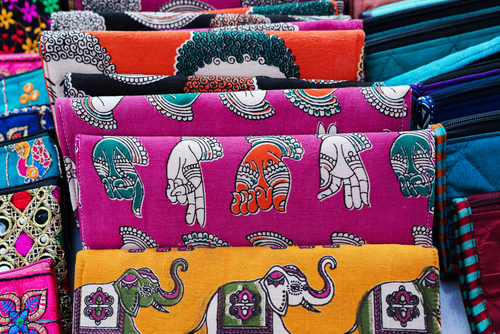
Kalamkari is a hand-painted or block-printed fabric from India, characterized by its narrative-driven motifs, often featuring flora, fauna, and mythological scenes. The level of detail in each piece is astonishing, with some panels taking weeks to complete. Designers value Kalamkari for its storytelling power, allowing them to incorporate history and culture into a space. Its earthy, natural dyes give interiors a grounded, artisanal touch.
The labor-intensive process involves multiple steps, including treating the fabric with natural mordants and hand-dyeing each section. Cotton is the most common base, which gives it a soft, tactile appeal. Colors are usually rich yet muted, creating an aged, museum-quality aesthetic that works beautifully in both traditional and modern settings. Designers often frame sections or use them as wall panels to showcase the art without risking wear and tear.
2. French Aubusson Tapestries
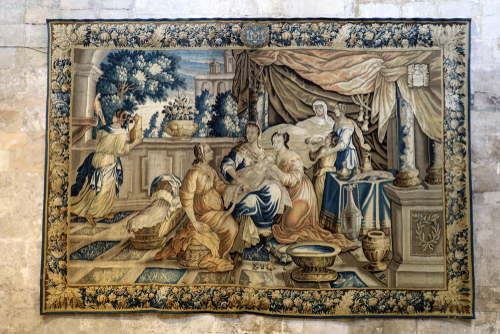
Aubusson tapestries are synonymous with elegance, often found in stately European homes and palaces. They are known for their painterly quality, almost like a canvas stretched across walls rather than underfoot. Designers love them for the storytelling element, as many depict pastoral scenes, mythology, or historical events. The delicate weaving process can take months or even years, which explains why they feel like fine art in textile form.
The textures are another reason these tapestries command attention; the pile is soft, almost velvety, yet sturdy enough to last generations. Color schemes often rely on subtle shading and natural dyes, giving them a warm, timeless look. Designers often use them as wall art rather than traditional rugs, allowing the intricate patterns to become a focal point. These tapestries carry the aura of old-world sophistication that few other textiles can match.
3. Japanese Kasuri Fabric
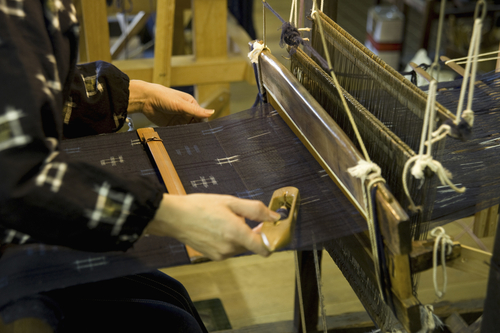
Kasuri fabric is a marvel of Japanese textile artistry, famous for its ikat-style patterns created by resist-dyeing threads before weaving. Each piece has a soft, blurred edge effect that makes it uniquely organic, impossible to replicate perfectly by machine. Designers love Kasuri for its subtle patterns and understated elegance, which can enhance both modern and traditional interiors. It’s versatile too, often used for upholstery, pillows, or framed as wall art.
Historically, Kasuri represented a community’s skill and patience, as dyeing and weaving were done by hand over many weeks. The natural fibers, usually cotton or silk, age gracefully, softening with time while maintaining strength. Colors tend to be indigo-dominated but can include earthy reds and browns, perfect for warm, layered interiors. For designers, it’s a textile that bridges cultural heritage with contemporary style effortlessly.
4. Antique Persian Rugs
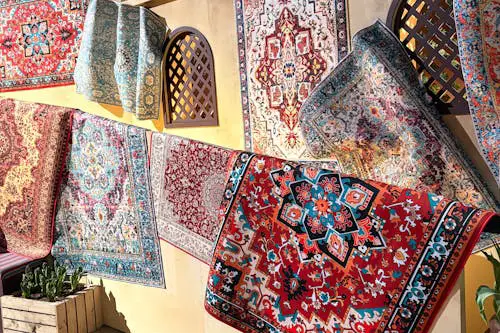
Persian rugs are the rock stars of the textile world, cherished for their intricate designs and masterful craftsmanship. Each rug tells a story through motifs that date back centuries, often incorporating symbols of fertility, nature, or protection. Designers prize them for their color palettes, which can transform a room with layers of deep reds, indigos, and golds. Owning one is like having a small piece of history under your feet, tangible and timeless.
The weaving techniques themselves are extraordinary, often passed down through generations in specific regions of Iran. Natural dyes, like madder root and indigo, give each rug a unique, living quality that synthetic dyes simply can’t replicate. Vintage Persian rugs are also durable, aging gracefully and developing a patina that adds to their character. For interior designers, they’re more than floor coverings—they’re investment pieces that elevate a space instantly.
5. Scottish Tartans
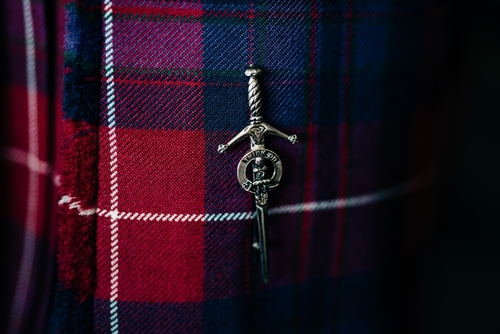
Tartan isn’t just for kilts—it’s a versatile textile with deep historical roots, each pattern representing a clan or region. Designers are drawn to tartan for its bold check patterns and ability to mix traditional motifs with contemporary decor. Its familiarity brings warmth and a sense of heritage into a home, making it ideal for upholstery, throws, or even wall hangings. Many vintage tartans are woven from wool, which softens and gains character over decades.
High-quality tartans are often woven in mills using traditional techniques that preserve the texture and richness of the wool. Colors are usually earthy and vibrant, thanks to natural dyes, giving interiors a cozy, lived-in feel. Designers love mixing tartans with other patterns for a layered, eclectic look. Vintage tartans, in particular, offer authenticity and depth that new fabrics rarely capture.
6. Italian Velvet
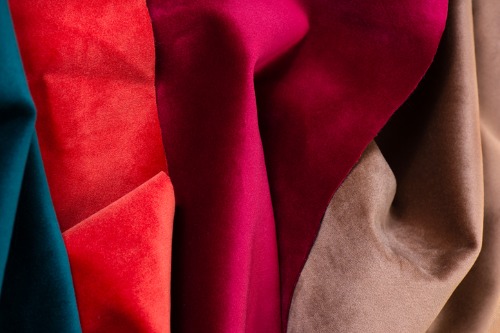
Italian velvet is the epitome of luxury, known for its plush texture and vibrant, jewel-like colors. Vintage pieces often carry a subtle patina that modern velvets lack, giving them a softer, more elegant appearance. Designers adore using it for upholstery, drapery, or even statement pillows, as it immediately adds richness to a room. The pile reflects light beautifully, creating a dynamic effect that changes with movement and perspective.
Italian velvet is traditionally woven from silk, sometimes mixed with cotton or wool, offering durability alongside opulence. Its deep colors, from sapphire blue to ruby red, often appear almost liquid in the right lighting. The tactile nature encourages interaction—people can’t resist touching it. For designers, it’s both a visual and sensory delight, perfect for high-impact interiors.
7. Ottoman Silk Brocades
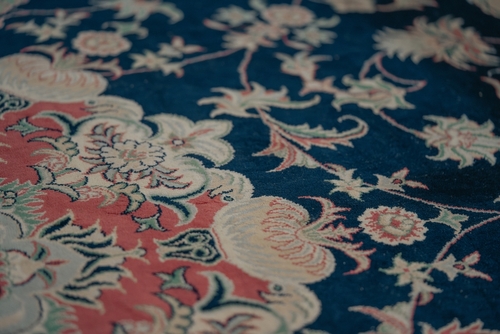
Ottoman brocades are woven with gold and silver threads, producing a luxurious, shimmering effect that immediately evokes grandeur. They were originally commissioned for sultans and ceremonial garments, which makes them highly prized today. Designers gravitate toward them for their intricate patterns and metallic highlights that serve as accents in both furniture and wall coverings. The craftsmanship is unparalleled, reflecting centuries of expertise in weaving and design.
These textiles often feature floral, geometric, or arabesque motifs, each telling a story rooted in Ottoman culture. The silk base gives it a lustrous finish while maintaining durability. Over time, these fabrics develop subtle variations in tone that add character and depth. Using Ottoman brocade, designers bring a touch of regal history into contemporary interiors.
8. Chinese Kesi Silk
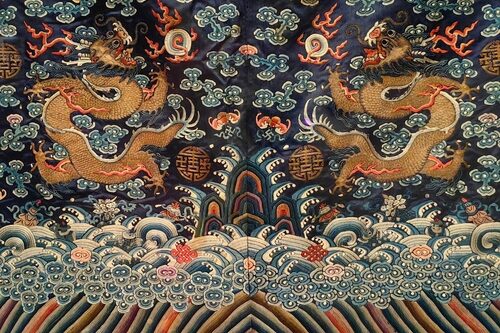
Kesi is a Chinese tapestry technique that produces extremely fine, almost pictorial silk fabrics. Each piece is woven with incredible precision, creating detailed scenes that can rival painted scrolls. Designers treasure Kesi for its intricate patterns and vibrant colors, which add a refined, artistic layer to interiors. It’s lightweight but strong, making it perfect for framed textiles or accent upholstery.
The technique dates back to the Tang Dynasty and often depicts landscapes, birds, and symbolic motifs. The silk threads themselves are delicate, yet the weaving method creates durability that preserves the design for centuries. Natural dyes produce a luminous quality that shifts subtly under different light. Kesi pieces are often treated like museum artifacts, underscoring their status as textiles that are art first, fabric second.
9. Moroccan Handwoven Rugs
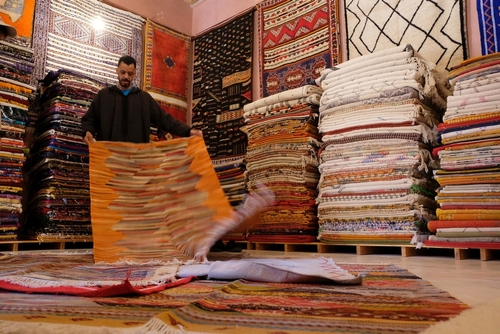
Moroccan rugs, particularly Beni Ourain styles, have exploded in popularity among designers for their bold, graphic patterns. Each rug is handwoven by Berber artisans, giving every piece a unique rhythm and texture. The thick wool provides warmth and softness while the black-and-white geometric designs add a modern, minimal aesthetic. Vintage Moroccan rugs carry an authenticity and imperfection that make them endlessly charming.
The wool is typically untreated or minimally processed, retaining natural oils that age beautifully over time. Patterns are often symbolic, representing fertility, protection, or nature, giving each rug a story. Designers love mixing them into clean, modern spaces to add contrast and tactile interest. Their versatility—from floor covering to wall hanging—makes them a designer favorite for every style of interior.
10. Hungarian Embroidered Textiles
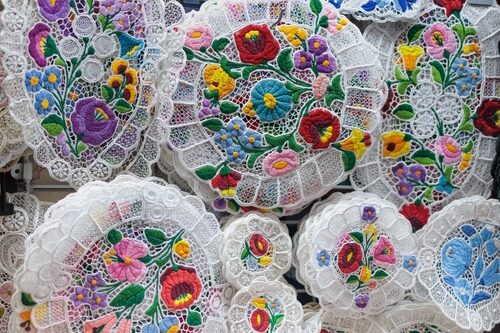
Hungarian folk embroidery is known for its bold floral motifs, intricate stitching, and vibrant colors. Each region has its own distinct style, making these textiles an endless source of inspiration for designers. They are often used in upholstery, pillow covers, or framed as decorative art pieces. Designers appreciate the handmade quality, which adds a human touch that mass-produced fabrics can’t match.
The embroidery techniques, like Matyó or Kalocsa, require incredible precision and patience. Cotton or linen bases are commonly used, creating a tactile texture that feels both rustic and refined. The color palette, dominated by reds, blues, and greens, adds warmth to any room. For designers, these textiles provide a perfect balance between folk tradition and contemporary aesthetic.
11. Turkish Kilims
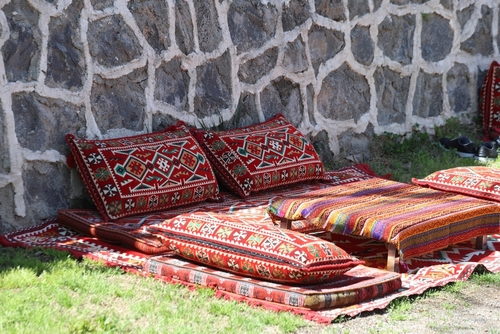
Kilims are flat-woven rugs that feature bold, geometric patterns and a striking use of color. Unlike pile rugs, their flat texture makes them versatile for wall hangings, upholstery, or layering over other rugs. Designers love Kilims for the story each pattern tells, often symbolizing protection, love, or prosperity. Vintage Kilims have a weathered charm that modern reproductions rarely capture.
The wool is dyed with natural pigments, producing earthy yet vibrant tones that soften beautifully with age. Each weave is slightly imperfect, giving the textile a sense of personality and history. Designers often mix Kilims with other textures to create a layered, global-inspired look. Their versatility and graphic appeal make them a perennial favorite in interiors.
12. Scandinavian Rya Rugs
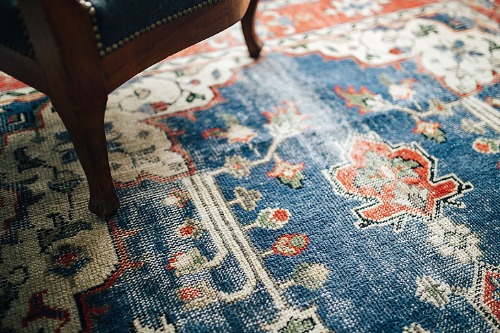
Rya rugs originated in Sweden and were initially practical, designed for warmth in cold homes. Over time, their long, shaggy pile and bold geometric or abstract patterns have elevated them to artful design statements. Designers love them for the dramatic texture they add to minimalist interiors. The vintage pieces, in particular, carry muted tones and unique motifs that bring a subtle sophistication.
Traditionally woven from wool, Rya rugs are surprisingly durable despite their soft, voluminous pile. Their patterns range from simple stripes to abstract motifs reminiscent of mid-century modern art. The tactile, cozy quality makes them ideal for layering in living rooms or bedrooms. For designers, a vintage Rya rug isn’t just a rug—it’s a textural centerpiece that blends warmth with artistry.
This post 12 Vintage Textiles That Designers Treat Like Fine Art was first published on Greenhouse Black.
